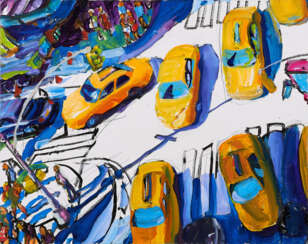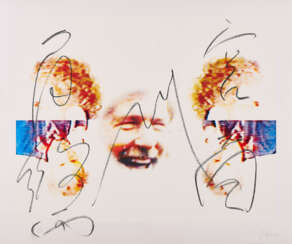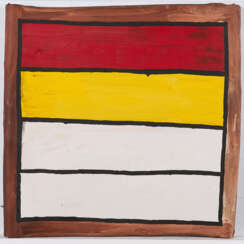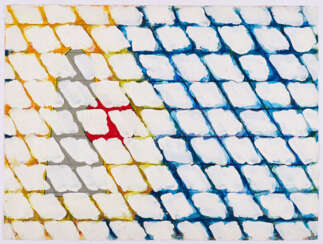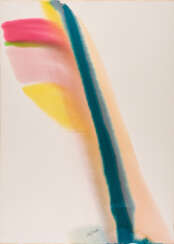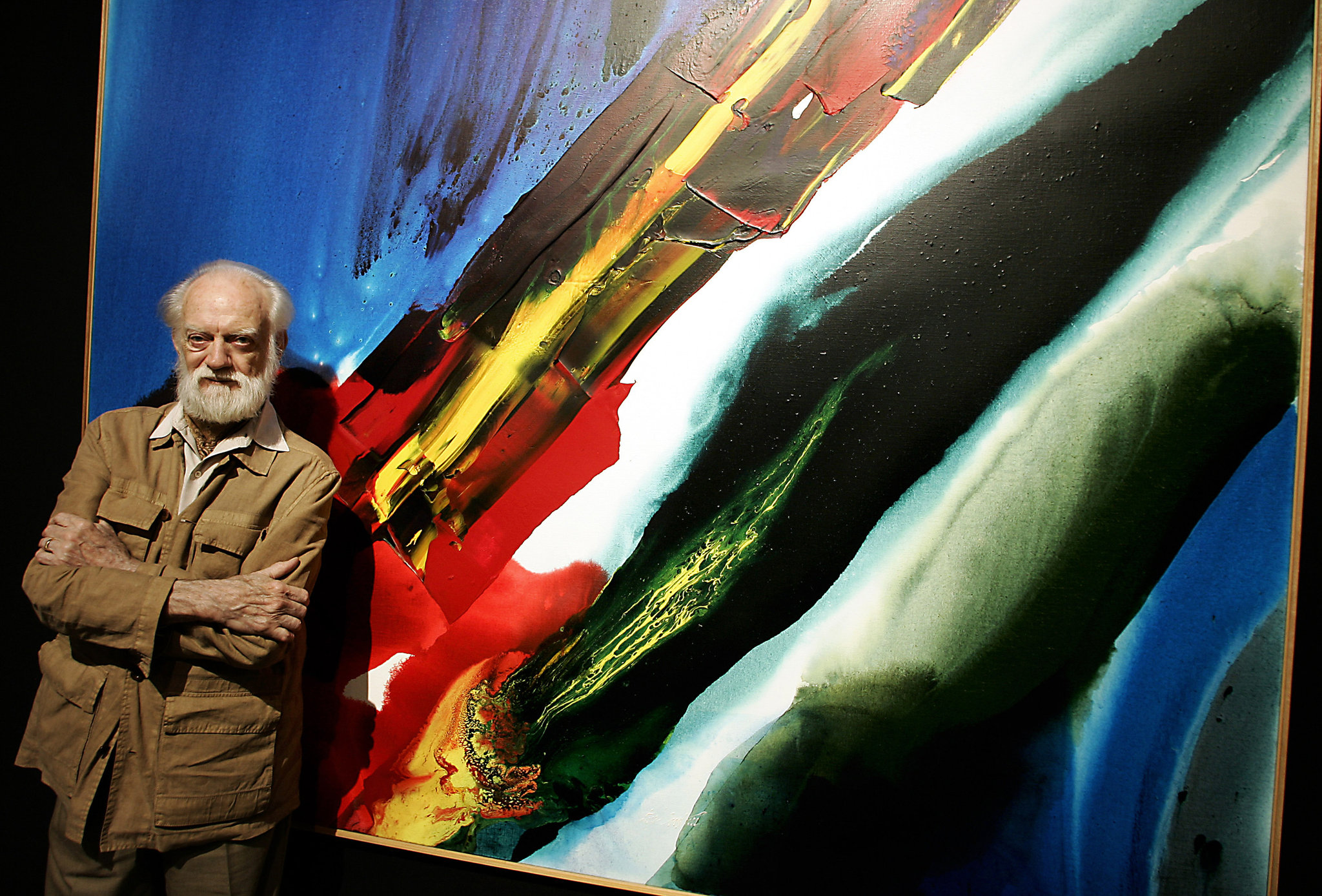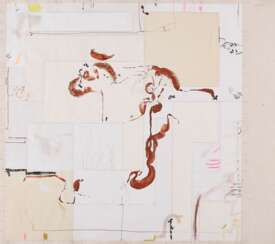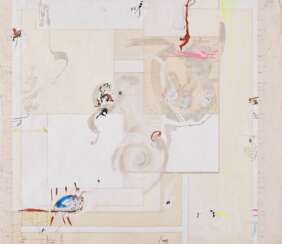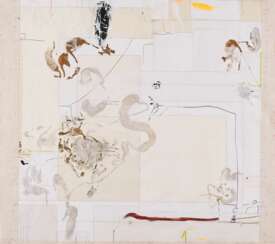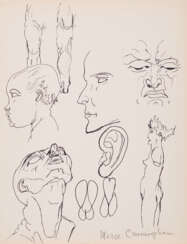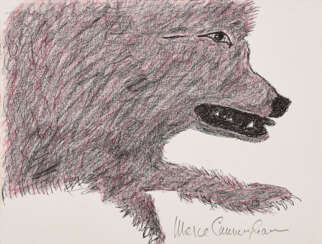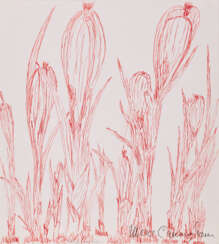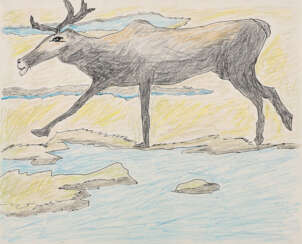
Post War — 1168: Made in America
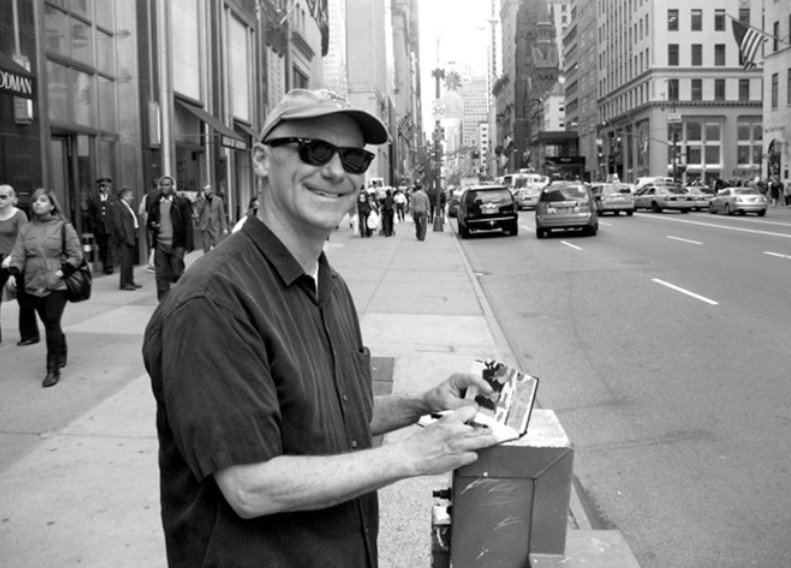
Tom Christopher is an American painter known for his New York City urban paintings and murals. Most of the work is painted using small-batch, handmade acrylic paint. Pencil lines from the initial exploratory sketch stage often remain on the white canvass. His typical images include cabbies, delivery men, skylines, and chaotic city scenes. His work is usually done with acrylic paint in an expressionist style. Christopher began as a commercial artist, and has become a painter with worldwide galleries and exhibitions. He has also experimented with collage-style paintings and silkscreens that utilize multiple images and layers.
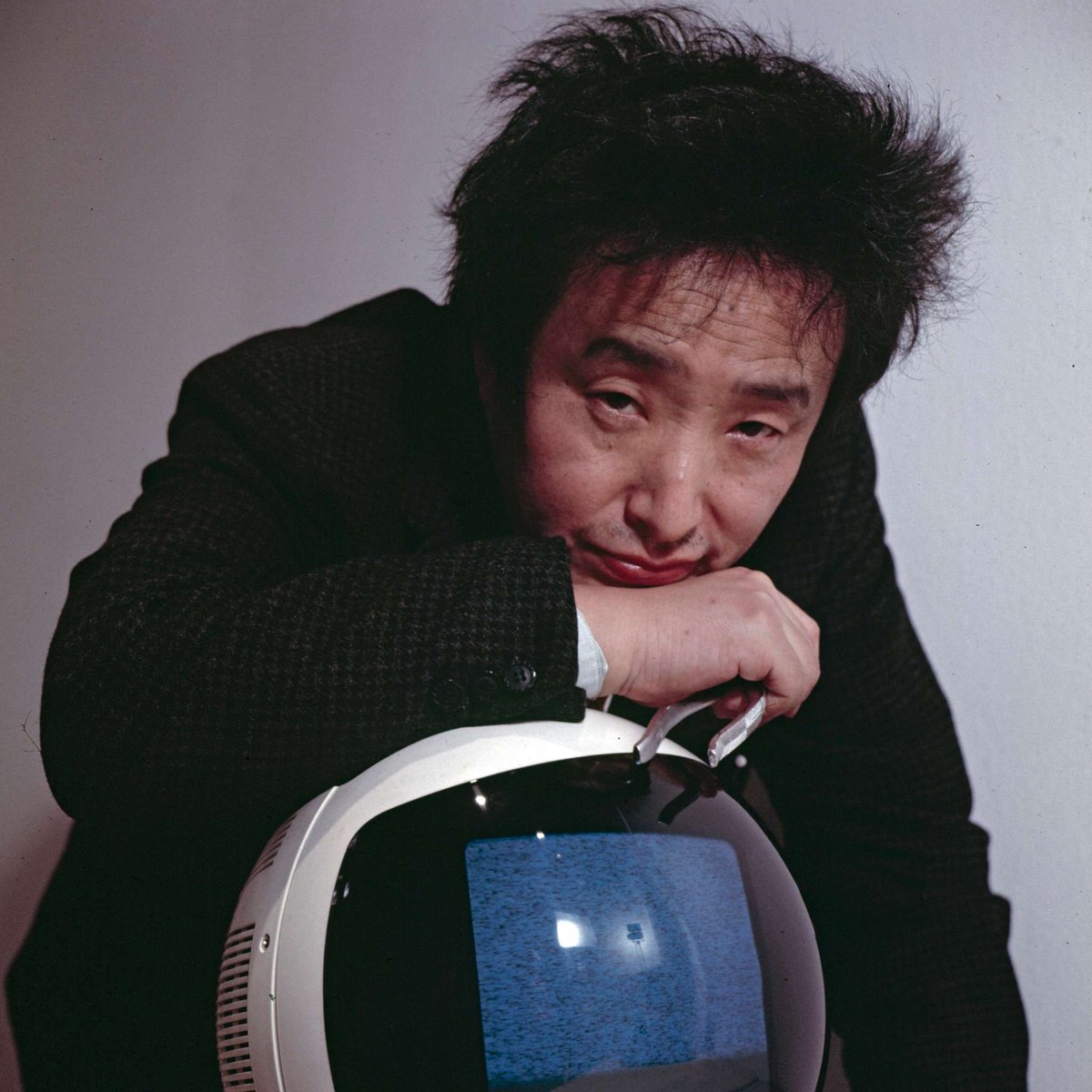
Nam June Paik (Korean: 백남준) was a Korean American artist. He worked with a variety of media and is considered to be the founder of video art. He is credited with the first use (1974) of the term "electronic super highway" to describe the future of telecommunications.
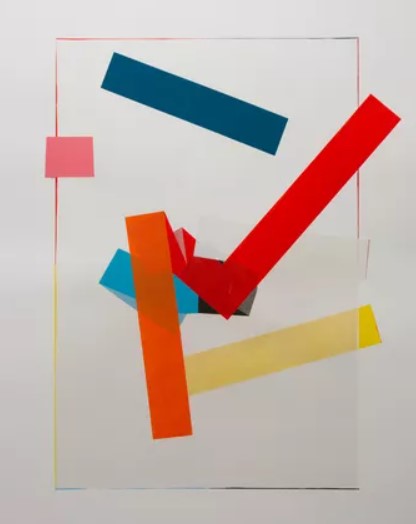
Jill Baroff is a contemporary American artist. She received her BFA from Antioch University, Yellow Springs, OH in 1976, took part in the Artist Seminars Program at the Whitney Museum of Art, New York in 1978 and received MFA from Hunter College, New York in 1981. In her works, she uses a self-structuring methodology in which their visual form is determined by the process by which they are made. Baroff's work reveals the artist's urge to purify, to distill a gesture or an idea until it reaches its most concentrated form. She exhibited in a range of venues, including Pablo's Birthday, New York, Bartha Contemporary, London, England, Galerie Christian Lethert, Brussels, Belgium etc.
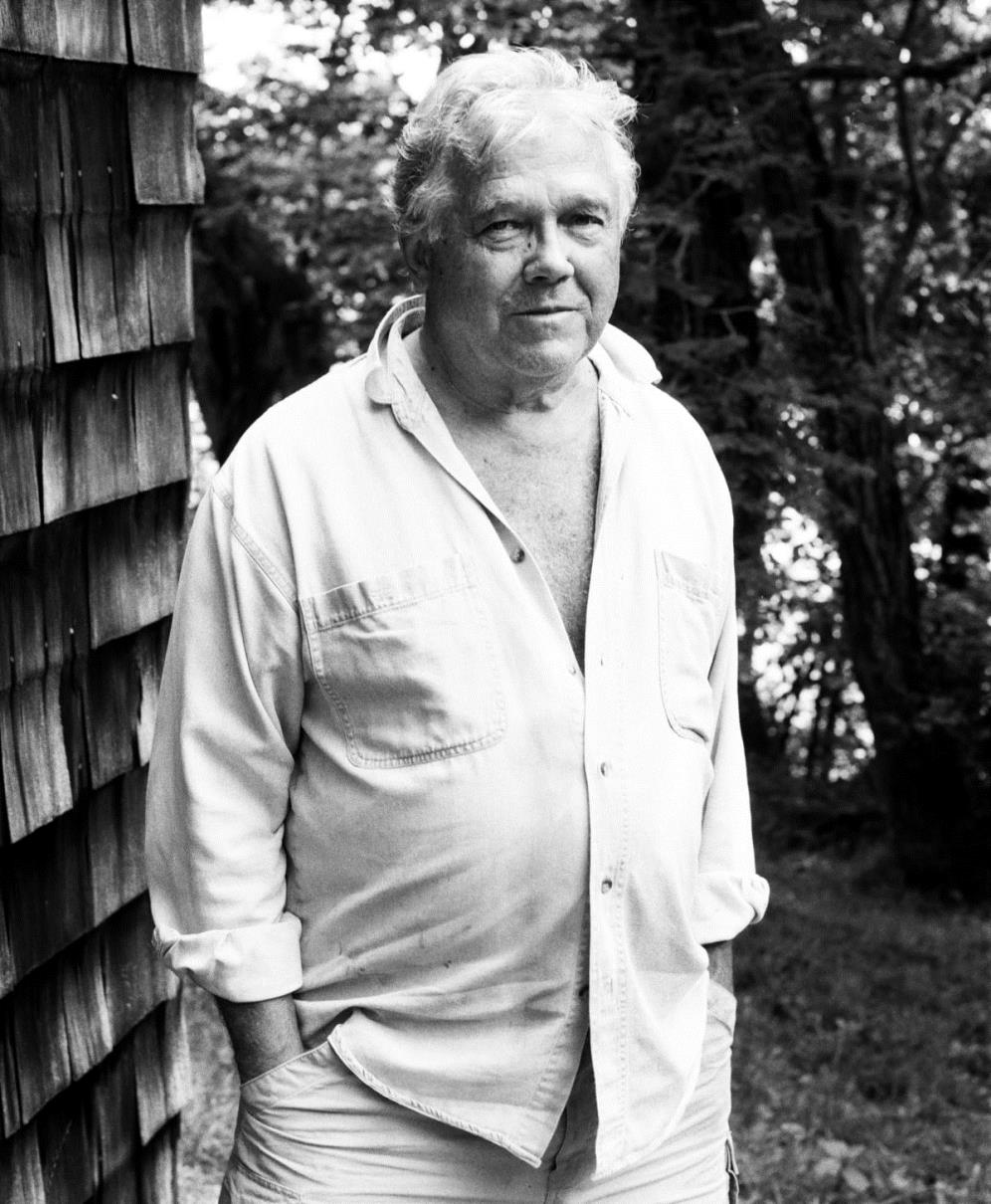
Gary Kuehn is an American artist who pioneered the Postminimal and Process Art movements of the 1960s. His work is known for its fluid use of materials that undermined the psychology of dominant Minimal Art practices.[16] Using a straightforward and reduced formal language, Kuehn subverts pure geometric forms with content-driven, metaphorical concepts. Although Kuehn works with a wide range of materials, the unifying theme throughout his discursive practices is a tension between forms as evident in his Black Paintings and Melt Pieces. In 1992 he received the Francis J. Greenburger Foundation Award.
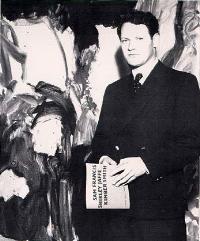
Kimber Smith was an American abstract painter. Best known for his lyrical compositions and distinctive lexicon of personal symbols, he eschewed the aggressive monumentality of the Abstract Expressionist era to focus on relatively small paintings of simple, entropic forms and colors. Smith went on to study at the Art Students League of New York shortly after the end of World War II. He would subsequently move to Paris, France in 1954, where he befriended fellow American ex-patriate painters Sam Francis and Joan Mitchell. Upon his return to New York in 1966, Smith had gained significant critical acclaim, which led to his mounting a solo exhibition at the Dayton Art Institute in Ohio in 1967 and garnering a Guggenheim Fellowship in 1971. Today, his paintings among the collections of the Stedlijk Museum in Amsterdam and the Zurich Art Museum, among others.
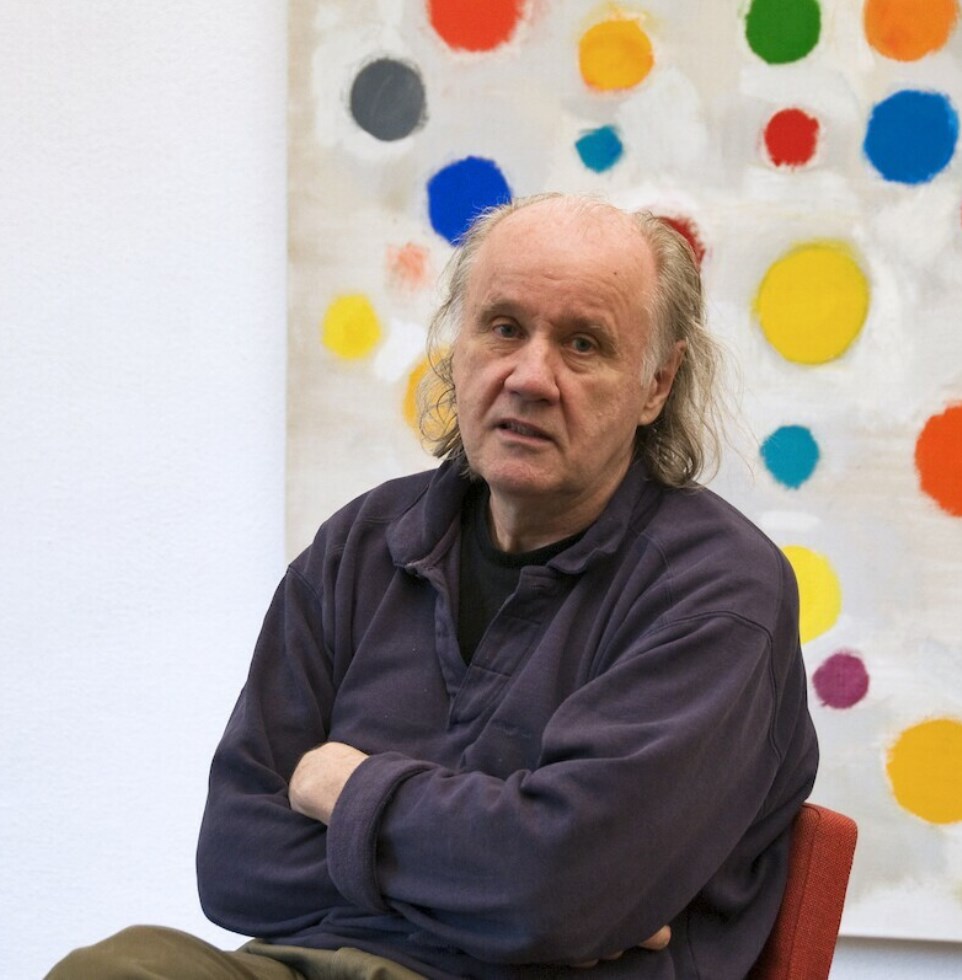
Jerry Zeniuk, a German and American artist of Ukrainian origin, is celebrated for his pioneering role in the realms of analytical, fundamental, and radical painting, movements that flourished primarily in the USA, Italy, and Germany during the 1970s. His art is distinguished by a meticulous focus on the essence of painting, exploring its potential and experiential spaces through a minimalist yet profound approach. Zeniuk's notable participation in documenta 6 in Kassel in 1977 underscored his significant contribution to these artistic trends, which has been recognized in numerous retrospectives.
Jerry Zeniuk's career includes an influential tenure as a professor at the Academy of Fine Arts in Munich from 1993 to 2011, further cementing his impact on the art world. His works, characterized by their subtle yet impactful exploration of color and form, have been included in the collections of prestigious institutions such as the Lenbachhaus in Munich, Neue Galerie in Kassel, Neues Museum Weserburg in Bremen, and internationally at the FRAC - Pays de la Loire in France and Kunstmuseum Winterthur in Switzerland, among others.
For collectors and art experts, Jerry Zeniuk's work represents a nuanced and intellectual approach to modern painting, offering depth and contemplation in each piece. His contributions have not only shaped the trajectory of contemporary art but also offer a timeless appeal to those who appreciate the layered complexities of visual expression.
Stay updated on Jerry Zeniuk's exhibitions and available works by signing up for newsletters tailored for art collectors and enthusiasts. This subscription ensures you remain informed about the latest sales and auction events featuring Zeniuk's work, providing unique opportunities to engage with the evolving landscape of contemporary art.

Jerry Zeniuk, a German and American artist of Ukrainian origin, is celebrated for his pioneering role in the realms of analytical, fundamental, and radical painting, movements that flourished primarily in the USA, Italy, and Germany during the 1970s. His art is distinguished by a meticulous focus on the essence of painting, exploring its potential and experiential spaces through a minimalist yet profound approach. Zeniuk's notable participation in documenta 6 in Kassel in 1977 underscored his significant contribution to these artistic trends, which has been recognized in numerous retrospectives.
Jerry Zeniuk's career includes an influential tenure as a professor at the Academy of Fine Arts in Munich from 1993 to 2011, further cementing his impact on the art world. His works, characterized by their subtle yet impactful exploration of color and form, have been included in the collections of prestigious institutions such as the Lenbachhaus in Munich, Neue Galerie in Kassel, Neues Museum Weserburg in Bremen, and internationally at the FRAC - Pays de la Loire in France and Kunstmuseum Winterthur in Switzerland, among others.
For collectors and art experts, Jerry Zeniuk's work represents a nuanced and intellectual approach to modern painting, offering depth and contemplation in each piece. His contributions have not only shaped the trajectory of contemporary art but also offer a timeless appeal to those who appreciate the layered complexities of visual expression.
Stay updated on Jerry Zeniuk's exhibitions and available works by signing up for newsletters tailored for art collectors and enthusiasts. This subscription ensures you remain informed about the latest sales and auction events featuring Zeniuk's work, providing unique opportunities to engage with the evolving landscape of contemporary art.
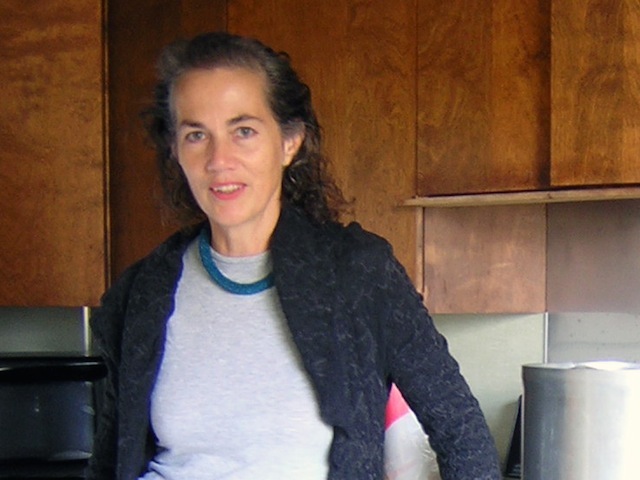
Joan Waltemath is a contemporary American artist. Her abstract paintings focus on constructing spatial voids using harmonic progressions and non-traditional, reflective pigments in oils as well as drawings in diverse materials. Shown in New York, Chicago, Los Angeles, Portland, London, Basel, and Cologne, her work is in the collections of the Museum of Modern Art, the National Gallery of Art and the Harvard University Art Museum among others. She has written extensively on art and served as editor-at-large of the Brooklyn Rail since 2001. In 2010, she was appointed the Director of MICA’s Hoffberger School of Painting. She was named a Creative Capital grantee in 2012.

Joan Waltemath is a contemporary American artist. Her abstract paintings focus on constructing spatial voids using harmonic progressions and non-traditional, reflective pigments in oils as well as drawings in diverse materials. Shown in New York, Chicago, Los Angeles, Portland, London, Basel, and Cologne, her work is in the collections of the Museum of Modern Art, the National Gallery of Art and the Harvard University Art Museum among others. She has written extensively on art and served as editor-at-large of the Brooklyn Rail since 2001. In 2010, she was appointed the Director of MICA’s Hoffberger School of Painting. She was named a Creative Capital grantee in 2012.

Joan Waltemath is a contemporary American artist. Her abstract paintings focus on constructing spatial voids using harmonic progressions and non-traditional, reflective pigments in oils as well as drawings in diverse materials. Shown in New York, Chicago, Los Angeles, Portland, London, Basel, and Cologne, her work is in the collections of the Museum of Modern Art, the National Gallery of Art and the Harvard University Art Museum among others. She has written extensively on art and served as editor-at-large of the Brooklyn Rail since 2001. In 2010, she was appointed the Director of MICA’s Hoffberger School of Painting. She was named a Creative Capital grantee in 2012.
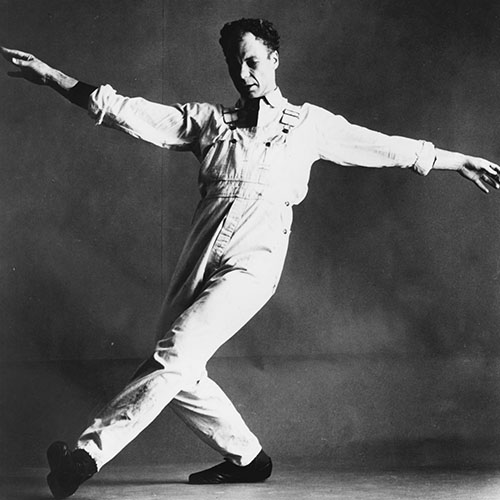
Mercier Philip "Merce" Cunningham was an American dancer and choreographer who was at the forefront of American modern dance for more than 50 years. He frequently collaborated with artists of other disciplines, including musicians, graphic artists and fashion designers. Works that he produced with these artists had a profound impact on avant-garde art beyond the world of dance. There have been numerous exhibitions dedicated to Cunningham's work. Also, his visual art is represented by Margarete Roeder Gallery.

Mercier Philip "Merce" Cunningham was an American dancer and choreographer who was at the forefront of American modern dance for more than 50 years. He frequently collaborated with artists of other disciplines, including musicians, graphic artists and fashion designers. Works that he produced with these artists had a profound impact on avant-garde art beyond the world of dance. There have been numerous exhibitions dedicated to Cunningham's work. Also, his visual art is represented by Margarete Roeder Gallery.

Mercier Philip "Merce" Cunningham was an American dancer and choreographer who was at the forefront of American modern dance for more than 50 years. He frequently collaborated with artists of other disciplines, including musicians, graphic artists and fashion designers. Works that he produced with these artists had a profound impact on avant-garde art beyond the world of dance. There have been numerous exhibitions dedicated to Cunningham's work. Also, his visual art is represented by Margarete Roeder Gallery.

Mercier Philip "Merce" Cunningham was an American dancer and choreographer who was at the forefront of American modern dance for more than 50 years. He frequently collaborated with artists of other disciplines, including musicians, graphic artists and fashion designers. Works that he produced with these artists had a profound impact on avant-garde art beyond the world of dance. There have been numerous exhibitions dedicated to Cunningham's work. Also, his visual art is represented by Margarete Roeder Gallery.

Mercier Philip "Merce" Cunningham was an American dancer and choreographer who was at the forefront of American modern dance for more than 50 years. He frequently collaborated with artists of other disciplines, including musicians, graphic artists and fashion designers. Works that he produced with these artists had a profound impact on avant-garde art beyond the world of dance. There have been numerous exhibitions dedicated to Cunningham's work. Also, his visual art is represented by Margarete Roeder Gallery.

Joan Waltemath is a contemporary American artist. Her abstract paintings focus on constructing spatial voids using harmonic progressions and non-traditional, reflective pigments in oils as well as drawings in diverse materials. Shown in New York, Chicago, Los Angeles, Portland, London, Basel, and Cologne, her work is in the collections of the Museum of Modern Art, the National Gallery of Art and the Harvard University Art Museum among others. She has written extensively on art and served as editor-at-large of the Brooklyn Rail since 2001. In 2010, she was appointed the Director of MICA’s Hoffberger School of Painting. She was named a Creative Capital grantee in 2012.
